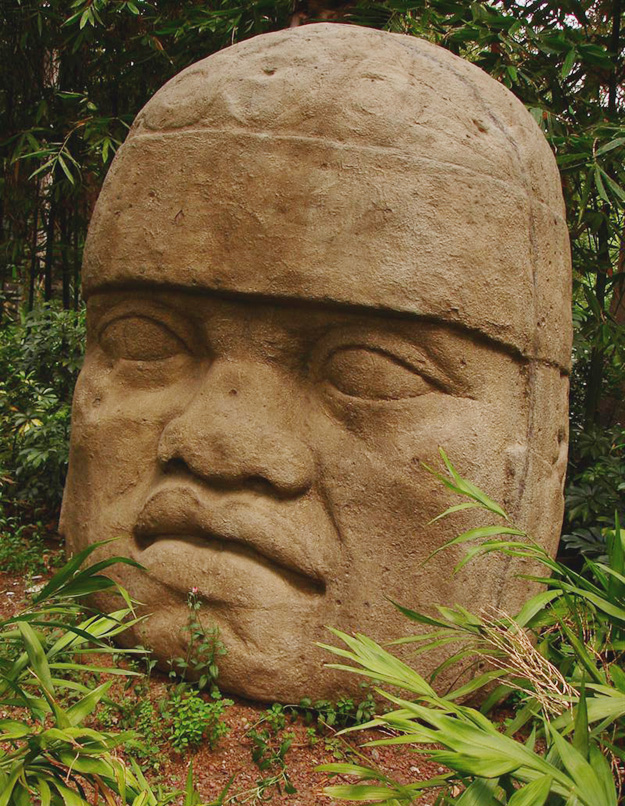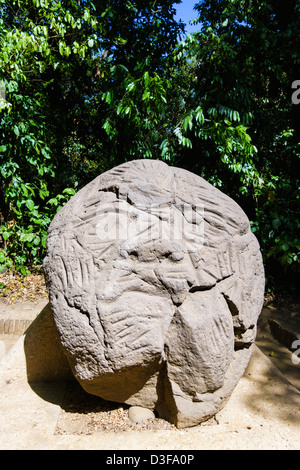

The geographic extent of the Olmec phenomenon has also been the subject of intense debate in recent decades. Seated figure (1200–900 BC), Olmec, Mexico. One might say the battle is not over, however, as recent discoveries at Maya sites such as Aguada Fénix are complicating the story by pushing back dates for the development of monumental architecture to 1000 BC, long before, in other words, a previously imagined Maya presence. The resulting inescapable chronological primacy of the Olmecs was hotly contested, most especially by the Mayanists, but ultimately Stirling – along with the artist Miguel Covarrubias and anthropologist Alfonso Caso, also great believers in the idea of the Olmecs as a ‘mother culture’ predating the Classic Maya – was proven correct. At the site of Tres Zapotes, however, Stirling uncovered a monument now known as Stela C, bearing a Long Count date correlating to 32 BC. Matthew Stirling of the Smithsonian Institution began intensive excavations at Olmec sites in the 1930s, but in this era before radiocarbon dating, and in the absence of a Long Count date – the Mesoamerican system for recording fixed time – the chronological placement of the site relative to the Maya was uncertain. The heads were likely originally lined up at the centres of sites, an outsize statement of power to any who ventured near the sacred precincts.Ĭolossal heads and other Olmec sculptures had been found as early as the second half of the 19th century, and the occasional studies of these monuments and sites ascribed them to the same period as the Classic Maya (250–900 AD) or even later. A number of the heads – ten were found at San Lorenzo, including one as recently as 1994, four from La Venta, and several others elsewhere – were also intentionally defaced by grinding divots into the surface of the sculptures, for reasons still not fully understood either chronologically or in intention.

Some of the heads are now known to have been recarved from altar-like thrones: what were once horizontally oriented blocks on which a ruler would sit were tilted upright on their sides and transformed into towering presences.

The fleshy folds of the faces, which are striking for their naturalistic visages suggesting portraiture, emerge beneath the tight helmets worn by warriors and ball-game players. Carved from basalt primarily found in the Tuxtla mountains, some 100km distant, the giant boulders were likely transported to sites such as San Lorenzo and La Venta, two of the major Olmec sites, by raft. The Gulf Coast’s robust public sculptural tradition begins on a startlingly grand scale with the colossal heads, a tradition for which there is no clear antecedent. This, in turn, may have contributed to the diminished presence of this region in our vision of Mesoamerica. Over time, however, writing (at least on monuments) became less important in the Gulf Coast region than in other parts of Mexico and Central America, particularly the Maya region to the south and east. This area was home to some of the earliest urban centres and public architecture and towards the latter part of the Olmec period it was where distinctive writing systems were developed. The dominant culture of this region between 1600 BC and 100 AD is generally designated as Olmec, and it exerted a lasting influence over its successor states. It was here that the first truly monumental stone sculptures were produced in the Americas – the so-called colossal heads of around 1200 BC – and it was here that Hernán Cortés and his men first made landfall in 1519 in the territory that is now the modern nation of Mexico. Long overshadowed by traditions that loom larger in the public imagination such as the Maya and the Aztecs, artists of the Gulf Coast region of Mexico produced some of the most striking sculptures known from the ancient Americas.


 0 kommentar(er)
0 kommentar(er)
